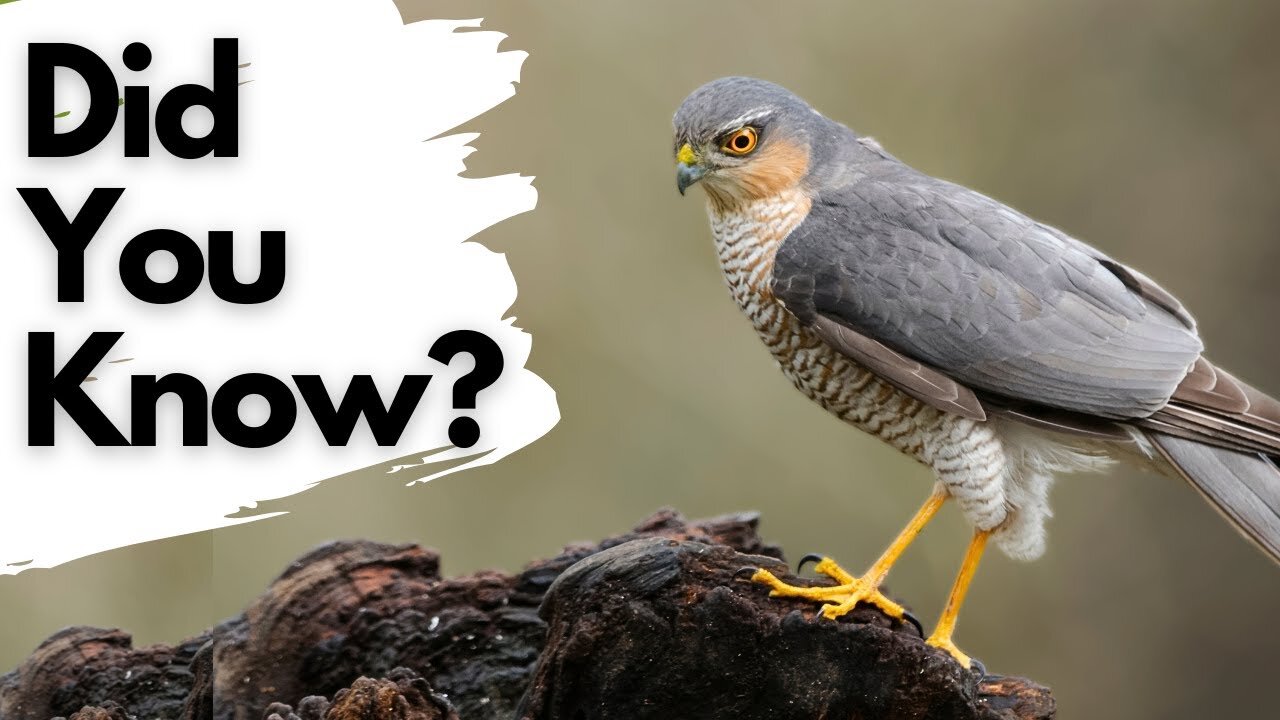Premium Only Content

Things you need to know about SPARROWHAWKS!
Sparrowhawks are small to medium-sized birds of prey belonging to the genus Accipiter. These birds are known for their agility and speed, making them formidable hunters in wooded areas. Here are some key things you need to know about Sparrowhawks:
Appearance: Sparrowhawks typically have short, broad wings and long tails, which aid in their maneuverability through dense vegetation. They often exhibit sexual dimorphism, with females being larger than males. Their plumage is predominantly gray or brown, helping them blend into their surroundings.
Habitat: Sparrowhawks are commonly found in woodlands, forests, and urban areas across much of the Northern Hemisphere. They prefer habitats with dense vegetation, which provides cover for stalking and ambushing their prey.
Diet: These raptors primarily feed on small birds, such as sparrows, finches, and tits, hence their name. They are skilled hunters, using surprise attacks and sharp talons to catch their prey mid-flight. Occasionally, they may also prey on small mammals, insects, and even bats.
Behavior: Sparrowhawks are solitary hunters, typically patrolling their territories and hunting areas alone. They rely on stealth and surprise to catch their prey, often darting through dense vegetation to ambush unsuspecting birds.
Reproduction: During the breeding season, Sparrowhawks build nests in trees, usually constructed of twigs, moss, and other plant material. Females lay a clutch of eggs, which are incubated for around 4 weeks. Both parents participate in feeding and caring for the young until they are ready to fledge.
Conservation: While Sparrowhawks are not considered globally threatened, certain populations may face challenges due to habitat loss and human disturbance. Conservation efforts often focus on maintaining suitable woodland habitats and minimizing human impact on nesting sites.
Interactions with Humans: Sparrowhawks occasionally attract attention from birdwatchers due to their striking appearance and hunting behavior. However, they may also come into conflict with humans, particularly those who keep domesticated birds such as pigeons and poultry.
#Sparrowhawks #BirdsOfPrey #Wildlife #Habitat #Predators #Conservation #Nature #BirdWatching
-
 35:18
35:18
The Quiet Part
1 hour agoMAID Is Coming for the Mentally Ill — But This Could Change Everything
67 -
 LIVE
LIVE
LFA TV
14 hours agoLFA TV ALL DAY STREAM - MONDAY 8/25/25
5,482 watching -
 LIVE
LIVE
Surviving The Survivor: #BestGuests in True Crime
1 hour agoLIVE Court: Wendi Adelson Testifies Against Mom, Donna Adelson, in Dan Markel's Murder Trial
273 watching -
 LIVE
LIVE
JuicyJohns
1 hour ago $0.05 earned🟢#1 REBIRTH PLAYER 10.2+ KD🟢
122 watching -
 1:14:57
1:14:57
JULIE GREEN MINISTRIES
3 hours agoRUSSIA IS ABOUT TO RELEASE SOMETHING THAT WILL CRUSH THE ESTABLISHMENT
65.5K150 -
 LIVE
LIVE
GritsGG
1 hour agoWin Streaking! Coloring Hair at End of Stream! Most Wins 3435+ 🧠
50 watching -
 DVR
DVR
Welcome to the Rebellion Podcast
20 hours ago $0.03 earnedMonday Funday - WTTR Podcast Live 8/25
12.2K1 -
 1:21:24
1:21:24
Game On!
16 hours ago $0.06 earnedTom Brady And The Las Vegas Raiders ARE BACK! 2025 NFL Preview!
30.7K1 -
 LIVE
LIVE
The Bubba Army
2 days agoShould RaJa Jackson Be Arrested? - Bubba the Love Sponge® Show | 8/25/25
1,579 watching -
 LIVE
LIVE
FyrBorne
15 hours ago🔴Warzone M&K Sniping: Builds So Strong They Think I'm Hacking
199 watching